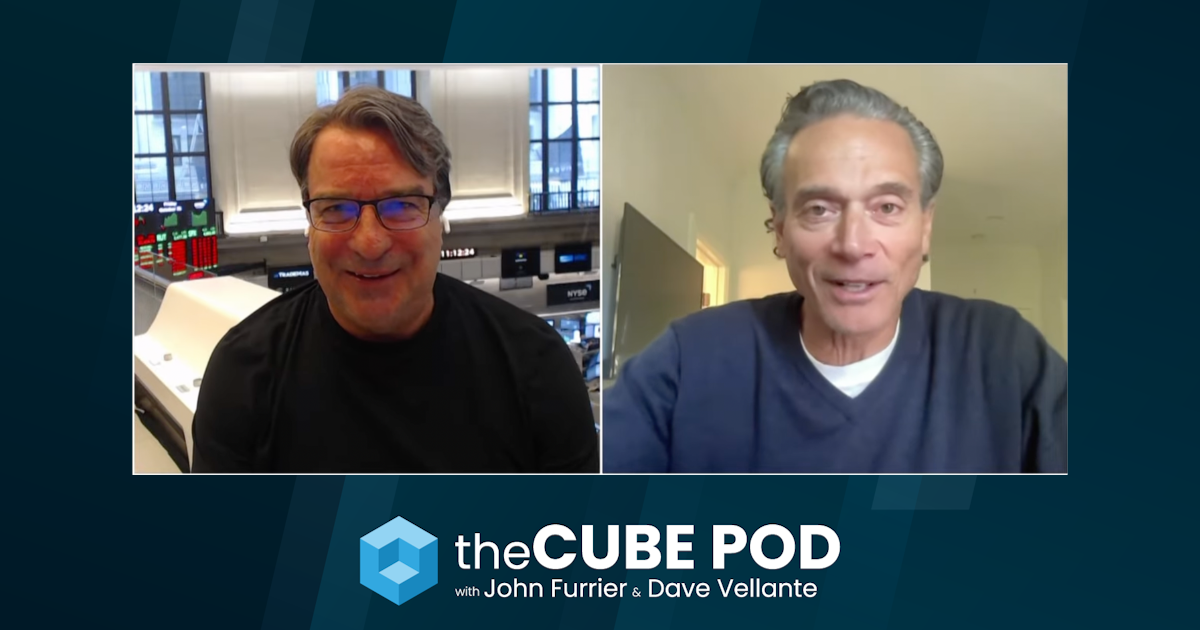Copyright SiliconANGLE News

As artificial intelligence becomes the backbone of modern economies, the balance between innovation, infrastructure and national policy has never mattered more. The latest conversations at Nvidia GTC DC brought those themes front and center, blending technical ambition with a distinctly political message about the role of AI in rebuilding the American economy. Nvidia Corp.’s dominance over the enterprise world is undeniable — the company just hit a $5 trillion market cap — but what does that mean for the future of American technology? At GTC DC, Nvidia CEO Jensen Huang’s keynote outlined a vision in which AI factories serve as the new industrial engines driving U.S. growth and job creation — even as automation transforms the workforce itself. “We can build these … factories in America, and we need labor to do them and it’s new kinds of labor,” said John Furrier (pictured, left), executive analyst for theCUBE Research. “You just need machines to build the machines and you need people to fix those machines and build those machines that build the machine. And [Jensen] made an amazing case for how the world is being rebuilt with AI.” On the latest episode of theCUBE Pod, Furrier and Dave Vellante (right), chief analyst for theCUBE Research, discussed takeaways from Nvidia GTC, as well as gaps in the nation’s energy infrastructure and how big cloud players are faring in the AI economy. Nvidia’s vision for American technology Nvidia bears a responsibility to be the rising tide that lifts all ships in the enterprise market, according to Vellante, and so far the company has its fingers in “every single vector of opportunity.” Huang has invested in clouds, neoclouds and large language model vendors, in addition to creating vertical libraries for specific industries. “It’s not just the Blackwells or the Vera Rubin chips,” Vellante said. “It’s also all that surrounding infrastructure and tooling that [Huang] wants developers to lean into and be basically addicted to. Jensen was very articulate in the importance of attracting those developers in China, where of course, he points out often that 50% of the world’s AI developers live in China and then half of the American AI developers happen to be Chinese.” Under the Trump Administration, relations between the U.S. and China have been strained, to say the least. While Huang hopes to sell Nvidia’s Blackwell chips in China, he has emphasized AI’s role in strengthening the U.S. economy. Part of Huang’s strategy for getting AI factories on the edge is making the U.S. dominant in telecommunications (telco) again, according to Furrier. The major contenders for the AI telco crown are Ericsson Inc., Huawei Corp. and Nokia Corp. Furrier sees Nokia, which recently partnered with Nvidia on an AI platform for 6G, as having an edge on its competitors. Advanced networking could enable Nvidia to run what are essentially micro AI factories across a metropolitan area such as New York Cit, and bring AI to edge devices. “If you look at the cloud wave, the people who made all the value extraction from cloud growth wasn’t the network telecom thing,” Furrier said. “It was the SaaS captured by Google and Apple and Amazon. In this new wave, the networks can actually extract value because AI factories can monetize and turn them on faster.” Could AI transform the US energy grid? U.S. Secretary of Energy Chris Wright made an appearance at Nvidia’s event, yet another sign that tech leaders are perfectly willing to get buddy-buddy with the Trump Administration. Alongside Huang, Wright sounded the call for the U.S. to expand its electric generating capacity so it can stay ahead in the AI race. “Mainstream media talks about how energy is the big gate,” Vellante said. “I actually think we’re going to solve the energy problem, because if we don’t solve the energy problem, we’re going to lose this race and there’s just too much at stake.” Nvidia looks to integrate hardware and software into a vertical stack, co-designing products with other players, such as Apple and Oracle, in the system. That plan includes building the infrastructure for quantum computing, with Nvidia announcing the first quantum-GPU interconnect. “It’s primarily an Nvidia-led, full stack engineering philosophy and discipline,” Vellante said of the vertical integration trend. “It definitely includes integrating LLMs and interconnects and any networks and power and data center infrastructure, but it’s really about optimizing the whole system. And that is part of Nvidia’s secret sauce.” Furrier sees the growth of AI infrastructure as similar to the the Defense Advanced Research Projects Agency, or DARPA, which facilitated the buildout of the internet. The U.S. government has the potential to be an accelerant to the AI market, though funding it directly seems unlikely. “We live in an era now where there’s not a lot of government funding anymore,” Furrier said. “In essence, the private sector is funding CapEx.” Cloud giants see big gains but suffer outages Although investors have some hesitations around the Magnificent 7’s AI spending, the Big Three cloud providers saw strong quarterly results this week: Amazon Web Services grew 20%, Google Cloud by 24% and Microsoft Azure by 39%. Nonetheless, Amazon and Microsoft both suffered some reputational damage, with each company experiencing an outage in the past couple weeks. The AWS disruption might have hurt Amazon more than laying off 14,000 employees, though it certainly proved to be a showcase for Snowflake Inc., according to Vellante. “You need to have a cross-AZ supercloud,” he said. “It allows you to fail over in the case of whether it’s a cloud outage from Amazon or Microsoft. [During the AWS outage] Snowflake had Snowgrid, which is basically a supercloud that allowed 300 workloads to fail over.” Here’s the full episode of this week’s theCUBE Pod: Don’t miss out on the latest episodes of “theCUBE Pod.” Join us by subscribing to our RSS feed. You can also listen to us on Apple Podcasts or on Spotify. And for those who prefer to watch, check out our YouTube playlist. Tune in now, and be part of the ongoing conversation. Image: SiliconANGLE



